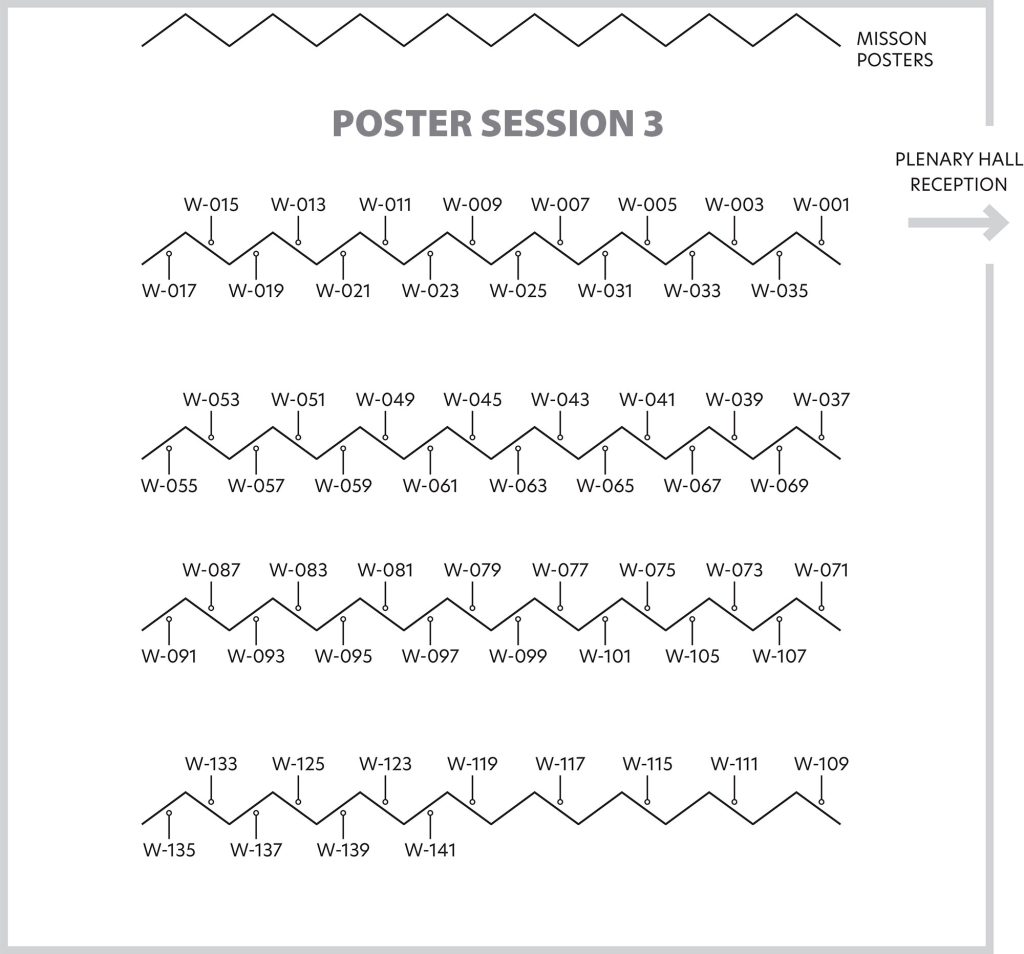POSTER Session 3
Wednesday, October 9
16:50–19:10
Poster Session | 1 | 2 | 3 | 4 | Instructions | Schedule at a Glance
ABSTRACT 856 | POSTER W-041
ANALYZING THE ABSORPTION DIVERSITY OF BLOOM-FORMING PHYTOPLANKTON SPECIES, A FIRST STEP TOWARD HYPERSPECTRAL REMOTE SENSING IDENTIFICATION OF RED TIDE EVENTS
Red tides, high-biomass phytoplankton blooms, are noteworthy phenomena and a major source of concern worldwide. Red tides can be harmful to marine fauna due to phycotoxins, mechanical damage, release of ammonia, and/or anoxia. During a red tide the algal biomass is orders of magnitude higher than during an open ocean bloom, and seawater optical variability is dominated by changes in phytoplankton abundance and composition. As the phytoplankton community is typically dominated by a single taxon, the absorption coefficient of a red tide sample can be merely approximated by the absorption coefficients of pure seawater and of the dominant phytoplankter. Identification of the causative species could therefore be feasible from remote sensing providing that the absorption coefficient can be accurately inversed from the remote-sensing reflectance, and the information contained in the absorption spectrum unambiguously related to the bloom-forming taxon. Here, the objective was to explore the second, absorption-related issue. A dataset of nearly 150 hyperspectral absorption measurements was obtained from culture data, compiling published and new measurements. The level of taxonomic information amenable to absorption-based analysis was assessed, and compared with pigment-based classification. In particular, the ability to distinguish dinoflagellates from diatoms, prymnesiophytes, and raphidophytes was demonstrated. This is an important result because Dinophyceae are known for their ability to form red tides, and recognized to be notoriously challenging to discriminate from other phytoplankton classes. All together, this study contributed to quantifying the optimal potential of hyperspectral remote sensing to identify red tides events in the absence of field information.
Pierre Gernez, Nantes University, France, [email protected], https://orcid.org/0000-0003-2055-410X
Victor Pochic, Nantes University, France, [email protected]
Ruediger Roettgers, Helmholtz-Center Hereon, Institute of Carbon Cycles, Germany, [email protected]
Martin Hieronymi, Helmholtz-Center Hereon, Institute of Carbon Cycles, Germany, [email protected]
Henning Burmester, Helmholtz-Center Hereon, Institute of Carbon Cycles, Germany, [email protected]
Maria Laura Zoffoli, Consiglio Nazionale delle Ricerche, Istituto di Scienze Marine (CNR ISMAR), Italy, [email protected]
Thomas Lacour, IFREMER, France, [email protected]
Amalia Maria Sacilotto Detoni, Consejo Superior de Investigaciones Científicas, Instituto de Ciencias Marinas de Andalucía (CSIC-ICMAN), [email protected]
Pauline Roux, ETH Zürich, Switzerland, [email protected]
Tristan Harmel, Magellium, France, [email protected]
Poster Session | 1 | 2 | 3 | 4 |
Instructions | Schedule at a Glance
Questions?
Contact Jenny Ramarui,
Conference Coordinator,
at [email protected]
or (1) 301-251-7708

